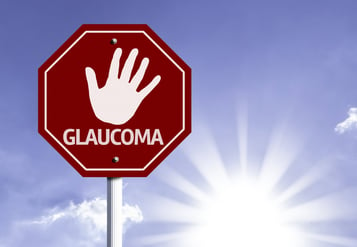The risk of severe eye issues increases significantly after the age of 65, according to a special report on aging and vision loss from the American Foundation for the Blind. Glaucoma, along with age-related macular degeneration, cataracts, and diabetic retinopathy, earns a spot among the four leading eye diseases. Let's take a closer look at this common condition, along with what seniors and their caregivers can do to promote optimal vision and quality of life.
About Glaucoma and Aging Eyes
Glaucoma comprises a group of diseases that cause vision loss by damaging the eye's optic nerve. There's no single type of glaucoma, although many forms -- including the most common types, primary open-angle glaucoma (POAG) and angle-closure glaucoma (ACG) -- involve a problem with the eye's drainage system in which fluid drains too slowly leading to buildup, pressure, and eventual damage to the optic nerve and surrounding parts of the eye. If left untreated, loss of vision can occur.
More than 2.7 million people in the United States have glaucoma, according to the NIH. Due to the aging population, this number is expected to increase to a whopping 4.2 million people by the year 2030. While anyone can get glaucoma, African Americans, senior citizens -- particularly Mexican Americans, and people with a family history of the disease are at increased risk. Additionally, people with diabetes or cardiovascular disease may also be at heightened risk for glaucoma. Researchers are diligently working to find a cure for glaucoma.
Unfortunately, glaucoma has no symptoms in its earliest stages and can occur gradually over a period of years with no noticeable vision loss. By the time symptoms do occur, the disease may already have reached advanced stages. Because of its stealth glaucoma has been called the "sneak thief of sight." In fact, 50 percent of people living with glaucoma don't know they have the disease.
Because this disease has no cure and vision lost to glaucoma cannot be restored, early diagnosis through routine comprehensive dilated eye exams is critical. Treatment, which involves the lowering of eye pressure, can play a valuable role in preserving existing eyesight.
If your aging loved one is already being treated for glaucoma, it's essential to make sure that he/she is regularly taking his/her medicine. While keeping track of this schedule can be a challenge, it's an important part of maintaining eye health and preventing further damage.
And remember: glaucoma's effects aren't just physical. Many seniors also suffer from emotional and psychological distress because of the disease. Sharing these feelings can help alleviate them.
While a glaucoma diagnosis may necessitate some lifestyle changes, it doesn't have to be life-changing. Proper disease management and proactive measures -- such as scheduling activities during the daytime and/or seeking out tinted lenses to help control glare -- can help improve quality of life. For more information on glaucoma or another health and wellness issue affecting seniors, check out mmLearn's extensive collection of videos offering essential caregiver training online.

